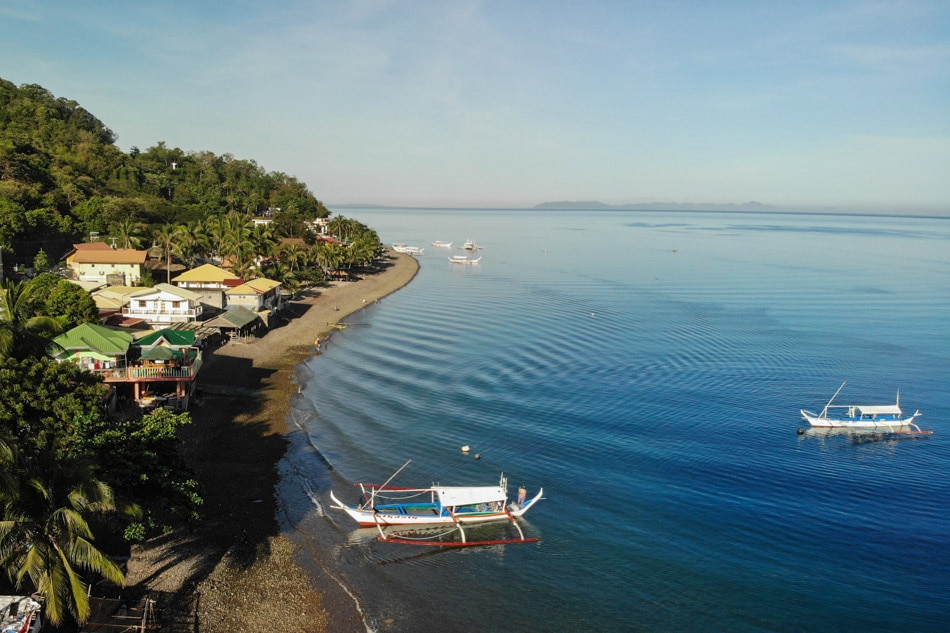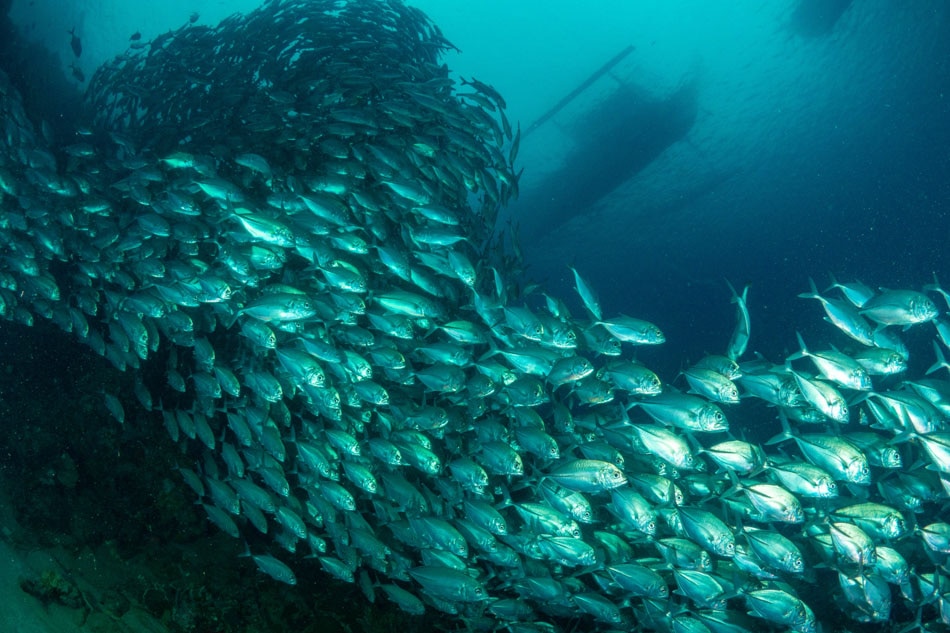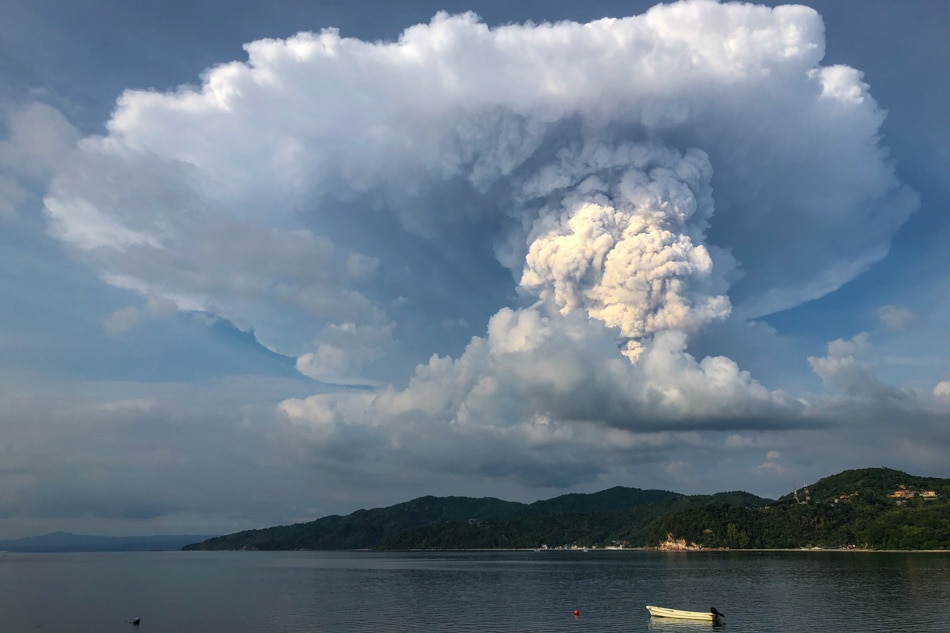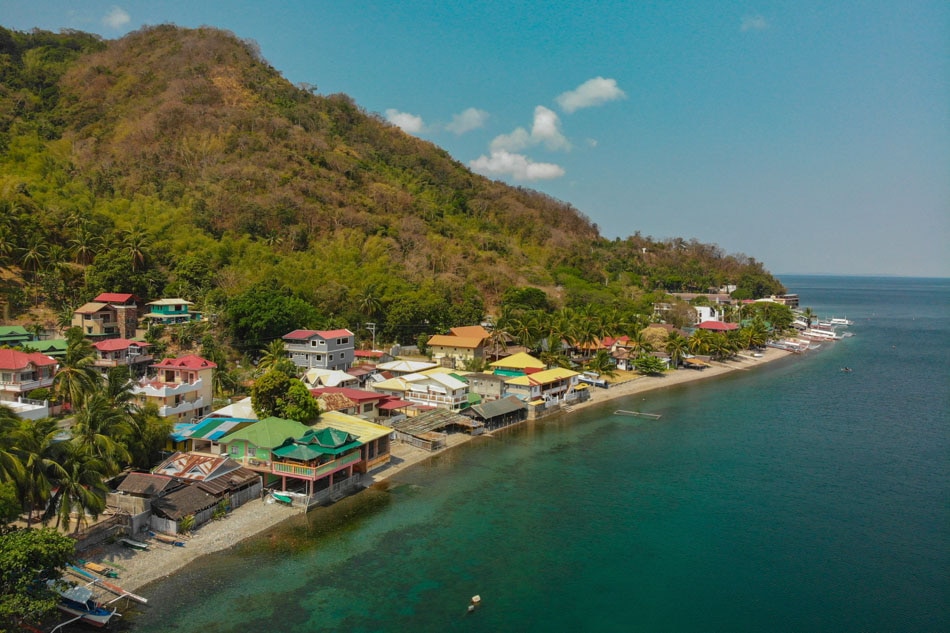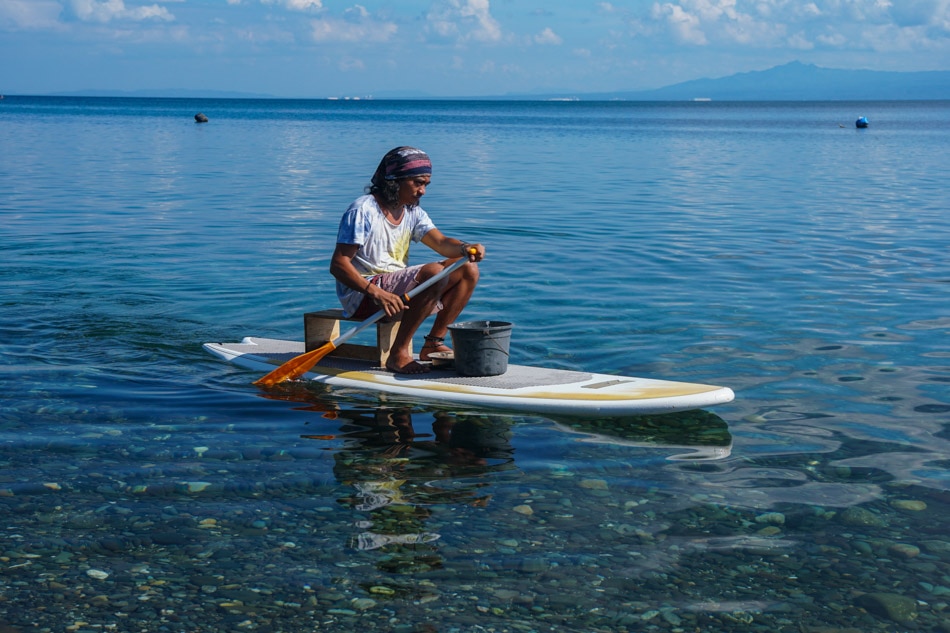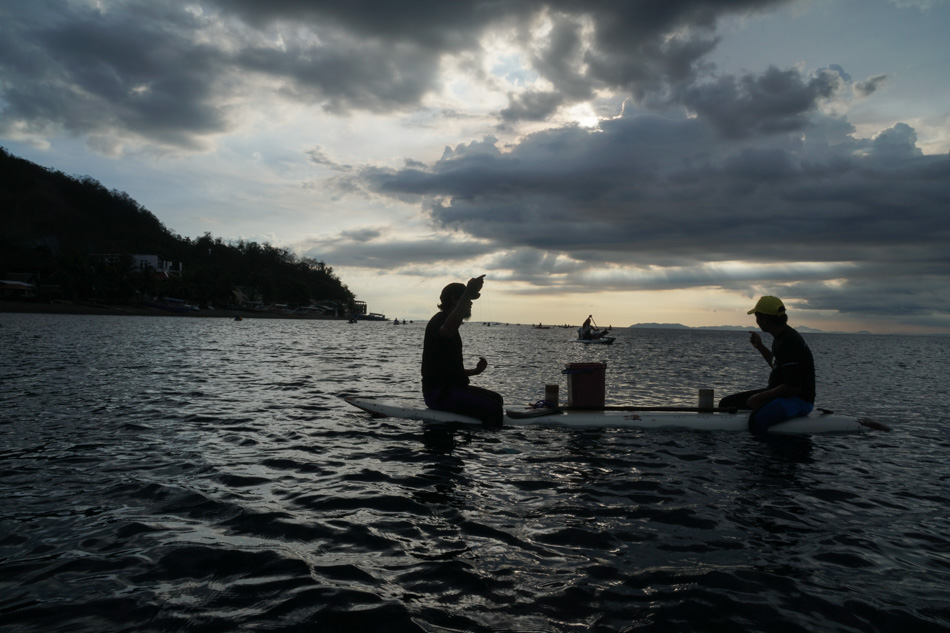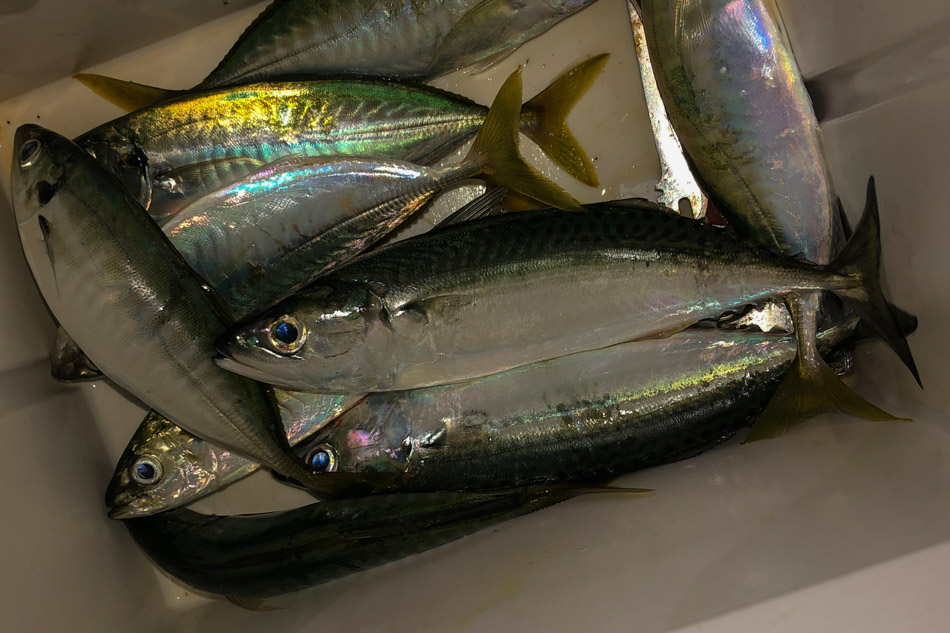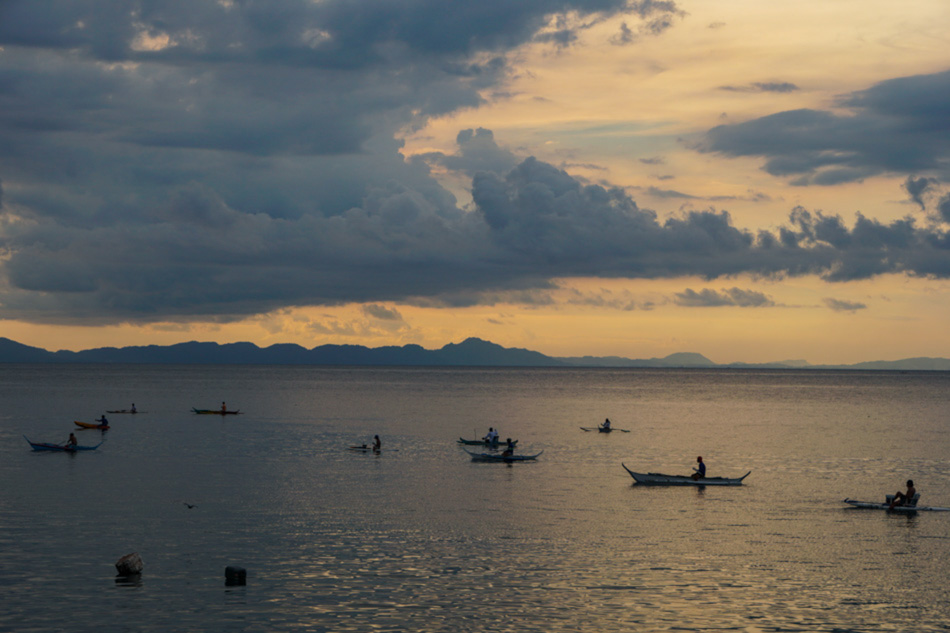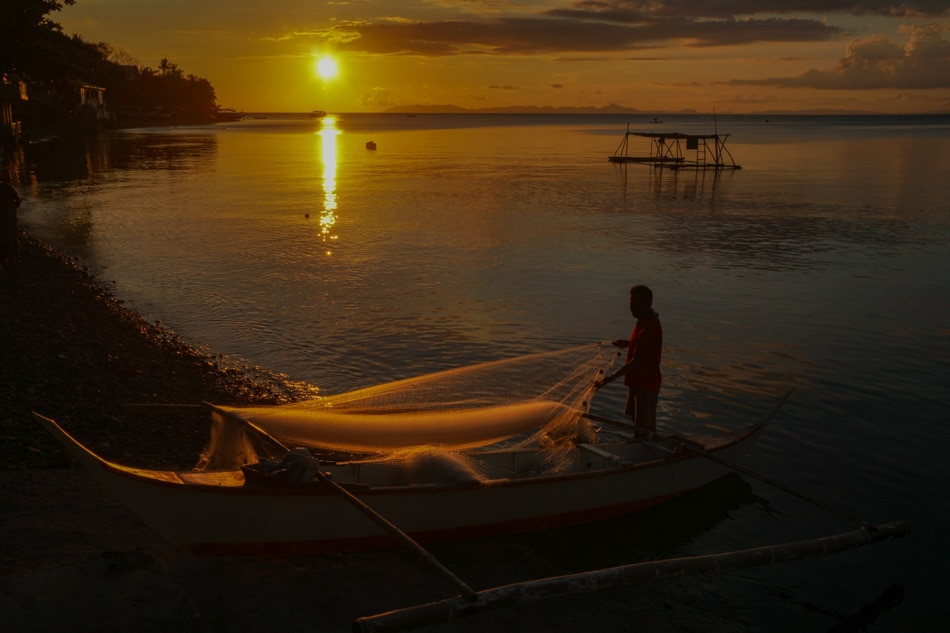IN PHOTOS: How the COVID-19 pandemic affected Anilao, Batangas | ABS-CBN
ADVERTISEMENT

Welcome, Kapamilya! We use cookies to improve your browsing experience. Continuing to use this site means you agree to our use of cookies. Tell me more!
IN PHOTOS: How the COVID-19 pandemic affected Anilao, Batangas
IN PHOTOS: How the COVID-19 pandemic affected Anilao, Batangas
Text and photos by Danny Ocampo,
ABS-CBN News
Published Jun 08, 2020 12:18 PM PHT
|
Updated Jun 08, 2020 04:30 PM PHT
World Oceans Day is celebrated every June 8 since 1992 to give a strong voice for the ocean sector.
World Oceans Day is celebrated every June 8 since 1992 to give a strong voice for the ocean sector.
Through the years, celebrating this day has allowed for stronger international and national policies that focus on implementing measures to manage and protect marine resources and fisheries.
Through the years, celebrating this day has allowed for stronger international and national policies that focus on implementing measures to manage and protect marine resources and fisheries.
This year, as we celebrate World Oceans Day, we are faced with a global pandemic that has affected everyone in different ways. Two sectors that rely on the oceans directly are tourism and fisheries, which both require healthy and resilient marine resources.
This year, as we celebrate World Oceans Day, we are faced with a global pandemic that has affected everyone in different ways. Two sectors that rely on the oceans directly are tourism and fisheries, which both require healthy and resilient marine resources.
What has been the impact of COVID-19 on these sectors in Anilao (Mabini), Batangas, considered to be the birthplace of scuba diving tourism in the Philippines?
What has been the impact of COVID-19 on these sectors in Anilao (Mabini), Batangas, considered to be the birthplace of scuba diving tourism in the Philippines?
ADVERTISEMENT
The municipality of Mabini, collectively called Anilao together with the municipalities of Tingloy and Bauan, is considered the birthplace of diving when the first resort and diving operations started in the 1960s. It has been popular for water sports activities such as windsurfing and paddling.
The municipality of Mabini, collectively called Anilao together with the municipalities of Tingloy and Bauan, is considered the birthplace of diving when the first resort and diving operations started in the 1960s. It has been popular for water sports activities such as windsurfing and paddling.
From the quiet town that it was then, it now has around 84 resorts that employ between 800 to 1000 people directly (not including freelance tourist and dive guides as well as boat crews).
From the quiet town that it was then, it now has around 84 resorts that employ between 800 to 1000 people directly (not including freelance tourist and dive guides as well as boat crews).
Located adjacent to the Verde Island Passage, considered the center of marine biodiversity, Anilao developed a reputation as a dive destination, which has led to a steady influx of visitors. Popular among macro photographers, the coast of Mabini boasts of underwater critters such as frogfishes, seahorses and their colorful relatives ghostpipefishes and pipefishes.
Located adjacent to the Verde Island Passage, considered the center of marine biodiversity, Anilao developed a reputation as a dive destination, which has led to a steady influx of visitors. Popular among macro photographers, the coast of Mabini boasts of underwater critters such as frogfishes, seahorses and their colorful relatives ghostpipefishes and pipefishes.
During the first quarter of 2019 (January to March), around 14,301 dive passes were sold by the Mabini Tourism office. This peaked at around 6,429 dive passes sold during the month of May. The dive pass or conservation fee is sold for P200 and the revenue is split between the municipalities of Mabini and Tingloy. Bauan has its own dive pass system for its dive sites.
During the first quarter of 2019 (January to March), around 14,301 dive passes were sold by the Mabini Tourism office. This peaked at around 6,429 dive passes sold during the month of May. The dive pass or conservation fee is sold for P200 and the revenue is split between the municipalities of Mabini and Tingloy. Bauan has its own dive pass system for its dive sites.
Early this year on January 12, Taal Volcano erupted and alert level 4 was raised in various towns surrounding the volcano. The town of Mabini was affected by ashfall and earthquakes were felt during the eruption leading to tourists shortening their stay or cancelling their trips. Dive passes sold in January 2020 were only 3,266, compared to 4,453 during the same month in the previous year.
Early this year on January 12, Taal Volcano erupted and alert level 4 was raised in various towns surrounding the volcano. The town of Mabini was affected by ashfall and earthquakes were felt during the eruption leading to tourists shortening their stay or cancelling their trips. Dive passes sold in January 2020 were only 3,266, compared to 4,453 during the same month in the previous year.
ADVERTISEMENT
This decline in tourism activities in Mabini were further felt from February when travel restrictions were imposed due to the spread of the novel coronavirus. Dive pass sales continued to decline from February until Luzon was put on enhanced community quarantine on March 15. Mabini was put on enhanced community quarantine on March 17 and visitors were requested to leave prior to the lockdown or they will not be allowed until the lockdown is lifted.
This decline in tourism activities in Mabini were further felt from February when travel restrictions were imposed due to the spread of the novel coronavirus. Dive pass sales continued to decline from February until Luzon was put on enhanced community quarantine on March 15. Mabini was put on enhanced community quarantine on March 17 and visitors were requested to leave prior to the lockdown or they will not be allowed until the lockdown is lifted.
A few days after the lockdown, boat operators dry-docked their boats used to ferry tourists and divers. Freelance dive guides and dive masters, some resort staff and boat crew started to look for other sources of income.
A few days after the lockdown, boat operators dry-docked their boats used to ferry tourists and divers. Freelance dive guides and dive masters, some resort staff and boat crew started to look for other sources of income.
Alvin Cedullo is local divemaster in Mabini and lives with his wife and daughter in Barangay Solo. He started diving in 2010 and started guiding guests since 2017. Since the lockdown was enforced in Mabini, he lost his main source of income since dive operations were suspended and resorts were closed down. The Mabini local government provided relief goods but these were not enough to support his family, so he turned to the sea.
Alvin Cedullo is local divemaster in Mabini and lives with his wife and daughter in Barangay Solo. He started diving in 2010 and started guiding guests since 2017. Since the lockdown was enforced in Mabini, he lost his main source of income since dive operations were suspended and resorts were closed down. The Mabini local government provided relief goods but these were not enough to support his family, so he turned to the sea.
Like others who became jobless during the lockdown, Cedullo turned to fishing. Since he doesn’t have a boat, he uses a paddleboard as his makeshift boat. Other dive guides and boat crew also use paddleboards and windsurfing boards when they go fishing, joining the more seasoned fisherfolk in the afternoon until early evening. What was once a busy bay for divers, is now once again a fishing ground for the locals of Mabini. Others would line up on the shore and glean shells and other marine life for food from the rocky shores.
Like others who became jobless during the lockdown, Cedullo turned to fishing. Since he doesn’t have a boat, he uses a paddleboard as his makeshift boat. Other dive guides and boat crew also use paddleboards and windsurfing boards when they go fishing, joining the more seasoned fisherfolk in the afternoon until early evening. What was once a busy bay for divers, is now once again a fishing ground for the locals of Mabini. Others would line up on the shore and glean shells and other marine life for food from the rocky shores.
Cedullo’s main source of income now is fishing, and he goes out to sea from around 3 p.m. and spends a minimum of an hour up to 3 hours to catch alumahan, lagidlid, galunggong and kalapato. He usually catches enough to feed his family but sometimes he comes back to shore with no catch. On really lucky days he can catch between 3 to 9 kilos of fish, more than enough for his family so he sells the rest to neighbors.
Cedullo’s main source of income now is fishing, and he goes out to sea from around 3 p.m. and spends a minimum of an hour up to 3 hours to catch alumahan, lagidlid, galunggong and kalapato. He usually catches enough to feed his family but sometimes he comes back to shore with no catch. On really lucky days he can catch between 3 to 9 kilos of fish, more than enough for his family so he sells the rest to neighbors.
ADVERTISEMENT
In the last two weeks, he decided to also buy bangus and tilapia from Anilao port and sell them to neighbors to augment his income. He is hopeful that tourists will once again come to Anilao but he’s also concerned about ensuring that those coming to his town will not cause the further spread of COVID-19.
In the last two weeks, he decided to also buy bangus and tilapia from Anilao port and sell them to neighbors to augment his income. He is hopeful that tourists will once again come to Anilao but he’s also concerned about ensuring that those coming to his town will not cause the further spread of COVID-19.
After two months of quarantine, those involved in tourism have expressed concern on whether tourism will bounce back and return in the near future while others are more concerned about COVID-19 and would rather not venture into tourism or allow visitors in their resorts any time soon.
After two months of quarantine, those involved in tourism have expressed concern on whether tourism will bounce back and return in the near future while others are more concerned about COVID-19 and would rather not venture into tourism or allow visitors in their resorts any time soon.
One important thing that needs to be done though is to manage and protect coastal and fisheries resources as it is a source of food for a lot of people, especially now that the world’s economy is on the decline due to the global pandemic. At the end of the day, protecting our oceans is about protecting our home and our food security.
One important thing that needs to be done though is to manage and protect coastal and fisheries resources as it is a source of food for a lot of people, especially now that the world’s economy is on the decline due to the global pandemic. At the end of the day, protecting our oceans is about protecting our home and our food security.
Read More:
COVID-19
coronavirus
general community quarantine
Tourism
World Ocean's Day
Anilao
Mabini
Batangas
multimedia
multimedia slideshows
ADVERTISEMENT
ADVERTISEMENT



